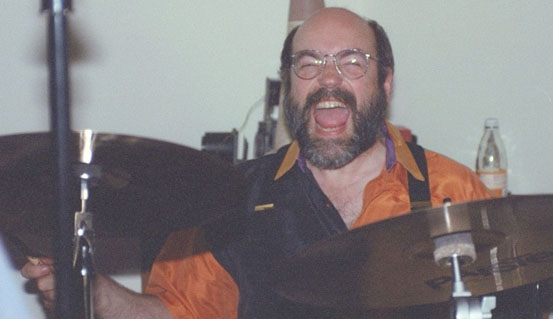A 2018 review of Mark Wieser's 1993 technological metaphors review

At Uniform we have recently started working on some ideas about the Connected Home. I took the opportunity to going through old Mark Wieser’s Ubicomp papers. For those who don’t know him, Wieser’s research while at PARC from late 80s - late 90s, has been pivotal in setting the scene to what more recently has been called the Internet of Things.
In one of his paper in particular, The World Is Not A Desktop from 1993, Mark reviews a number of metaphors of technological visions popular at the time, with the aim to demonstrate why his idea of invisible technology was superior to other research directions.
What’s surprising is that almost all of the metaphors mentioned by Mark are still actual now, in a way or another. So, as an exercise in perspective, here’s my then-and-now state of technological metaphors, 1993-2018.
-
Multimedia
The first to be mentioned in Mark’s paper and the only one that means nothing to us anymore. The term has disappeared into normality and actually remembering about it makes me feel old. Nonetheless Mark’s issue with multimedia - “should computer interfaces be attractive at all” - hits the nail of a problem that got more, not less, actual. With “engagement” they key metric through which we measure the success of digital products today, attractiveness in spite of usefulness is still a mayor pain point in 2018.
-
Intelligent Agents
On one hand the concept of Intelligent Agents in 1993, especially as exemplified by Microsoft Office’s Clippy, had since fallen into disgrace (apart from some jokey nostalgic reinterpretations). On the other hand it made a glorious comeback as chatbots in messaging platforms, in smartphone as virtual assistants (Google Assistant, Samsungs’s Bixby and Apple’s Siri) and in smart speakers. And with it, Wieser’s issues with such technologies has also resurfaced.
“Are human interactions so free of trouble, misunderstanding, and ambiguity that they represent a desirable computer interface goal?”. But to his rhetorical question, I’d also add that conversely, the human qualities of resourcefulness and improvisation are the kind of things we look for when we want to “speak with an operator”.
So an “intelligent agent” that is neither resourceful nor unambiguous, such is still the case with the chatbots we have right now, can just be at best a curious nicety rather than a useful interface when we want to get stuff done with a computer. For the rest, GUIs will still be my choice.
-
Magic
“magic is about psychology and salesmanship, and I believe a dangerous model for good design and productive technology. “
Fast forward to our days, and “magic” is still a common resource that companies use when promoting and popularising their technologies. Supernatural is obviously the oldest way to talk about complex thing and also its use in technology was nothing new even in 1993.
Tobias Revell does some great work on the topic. He gives an historical perspective on how every mayor technological advancement inevitably overflow into supernatural, and he also evocatively reminds us of the risks involved in dealing with “forces” we cannot control: “when magic goes wrong, the narrative of magic can quickly turn to horror”, in other words: be honest to your users, or they’ll run away with fear from your product.
-
Virtual Reality
It was the new big thing then. Wired’s Kevin Kelly, went to Jaron Lanier’s lab to get his mind blown at Jaron’s virtual realities; the Lawnmower Man film made the concept popular for the general public; and tons of tech companies were jumping on the VR bandwagon. After that we had a brief winter, and again a popularity boost, peaked in 2014 with the acquisition of Oculus Rift by Facebook for $2bn. According to the usual Gartner, Virtual Reality is now just surfing up the wave of disillusionment. The technology is there, the lag problems that hindered its development in the past have been solved and the overall quality is incrementally improving. There are some specific fields where it is gradually finding applications - such as entertainment and 3D visualisation for architecture and product design - and my humble guess is that Virtual Reality has reached a plateau, and from now on interest and funds will migrate more and more towards its younger sibling: Augmented Reality.
-
Voice Input
About this technology Wieser argues: “when I can send email to my computer and have it DWIM the answer, then I’ll start to believe in voice computers for limited applications.”, where DWIM is an acronym for “Do What I Mean”. Here’s is the only case among the other metaphors reported by Wieser where our current perception of the technology has significantly changed since 1993.
Because in 2018 we are able to speak commands to a computer using natural language. And in fact millions of Echo, Google Home or HomePod are in people’s houses around the world are doing it all the time.
And also when he adds that “most of my life I am with other people, and I want to talk (or listen) to them, not to my computer”, he has in mind the Star Trek scenario of a “work” environment in which people are continuously executing tasks with computers using voice commands.
On the other hand, I think, the way we are using connected speaker at the moment - as hands-free controller for music, lights or other appliances, and as a search engine for weather and other kind of generic information - is not too far from the idea of calm tech that Wieser had envisioned. A tool that don’t ask for our constant attention but is available to help us with small, humble home tasks.
👋 Mark.
PS - Image is Mark Wieser playing drums with his band Severe Tire Damage and it’s taken from the band page here.